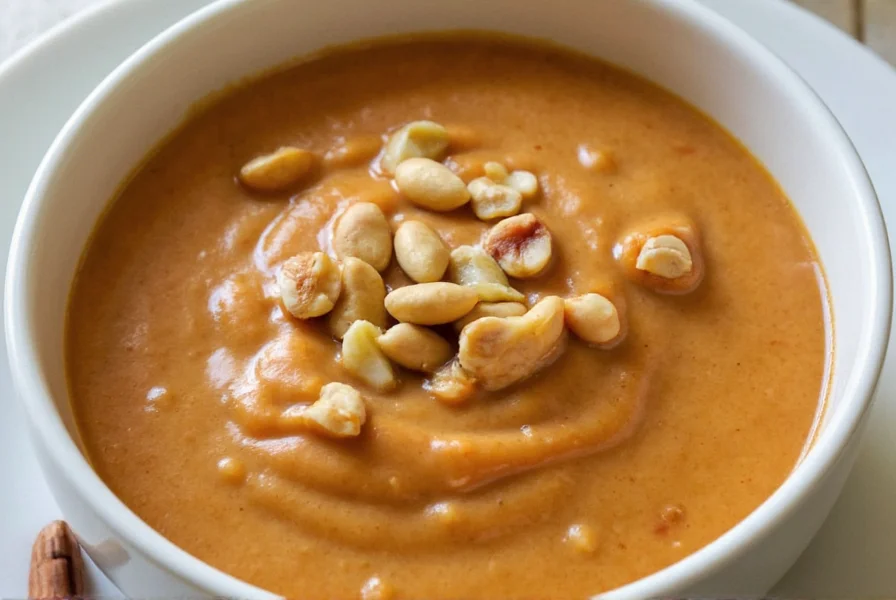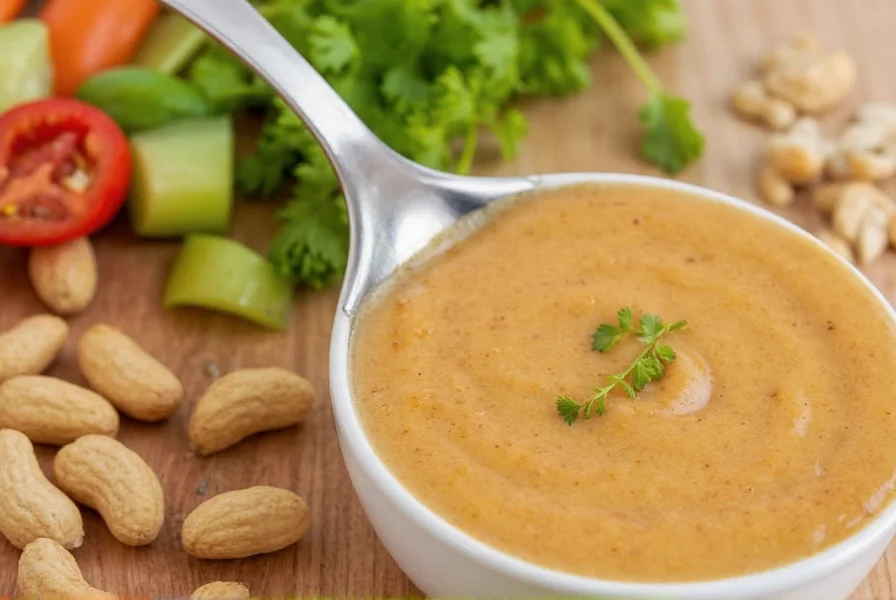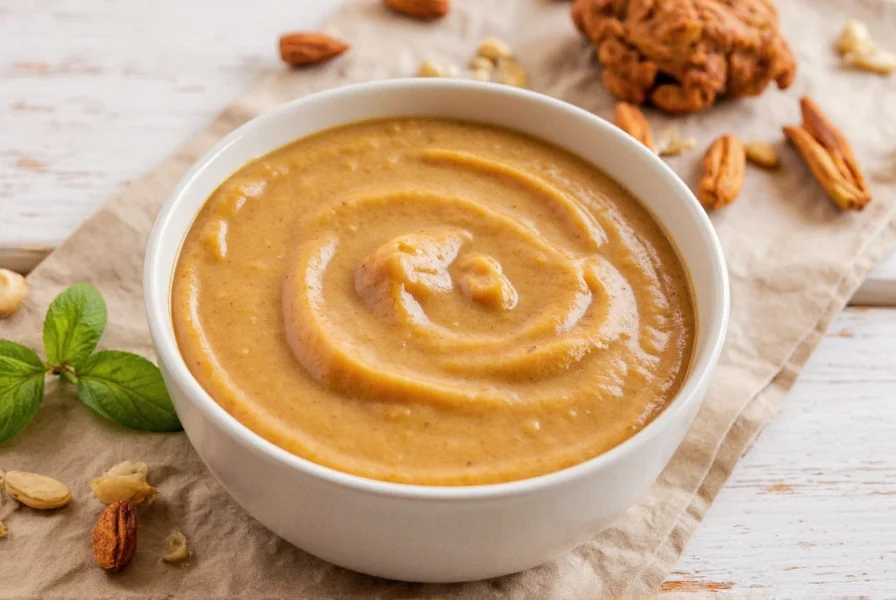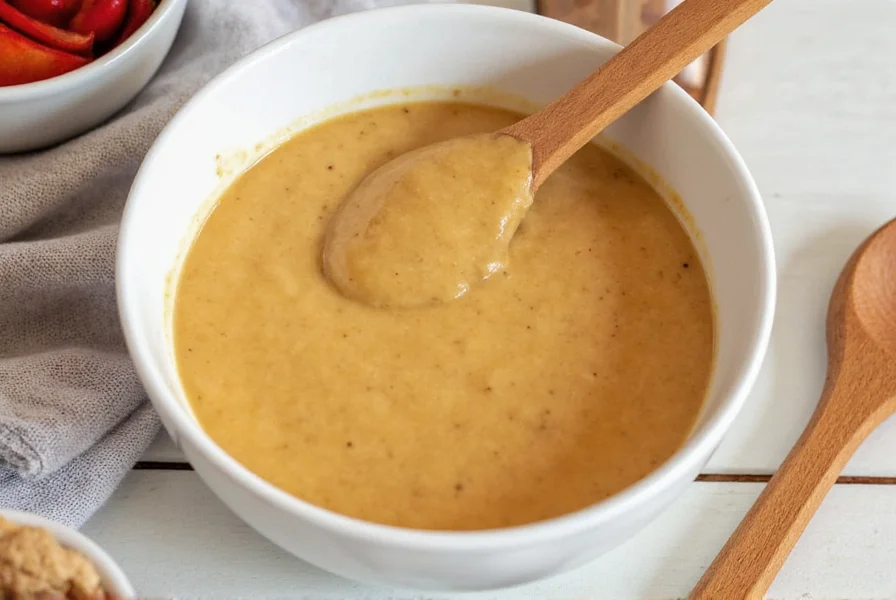Table of Contents
Easy Homemade Peanut Satay Sauce Recipe
Ready in just 10 minutes with 5 simple ingredients, this peanut satay sauce is perfect for satay skewers, spring rolls, or as a dip. Here's how to make it:
Key Ingredients in a Peanut Satay Sauce
A good peanut satay sauce starts with quality ingredients. Here are the main components you'll need:
- Peanuts: Roasted and ground peanuts form the base of the sauce. They provide a rich, nutty flavor.
- Coconut Milk: Adds creaminess and helps balance the richness of the peanuts.
- Soy Sauce: Provides saltiness and depth of flavor.
- Tamarind Paste: Adds a tangy note that enhances the overall complexity of the sauce.
- Garlic and Ginger: These aromatics bring warmth and fragrance to the dish.
Some recipes also include chili for heat, while others prefer a milder version. The choice of ingredients can vary depending on regional preferences, but the core elements remain consistent.
Step-by-Step Guide to Making Peanut Satay Sauce
Making peanut satay sauce at home is easier than you might think. Follow these steps to create a smooth, flavorful sauce:
- Roast the Peanuts: Spread raw peanuts on a baking sheet and roast them in the oven at 350°F (175°C) for about 10–12 minutes until golden brown. Let them cool before grinding.
- Grind the Peanuts: Use a food processor or blender to grind the roasted peanuts into a fine powder. You can also use store-bought peanut butter if you're short on time, though freshly ground peanuts offer more depth of flavor.
- Add Liquid Base: Pour in coconut milk and mix well. The amount of liquid depends on how thick or thin you want the sauce. A common ratio is 1 cup of coconut milk per 1 cup of ground peanuts.
- Incorporate Aromatics: Add minced garlic, grated ginger, soy sauce, tamarind paste, and sugar. Stir or blend until everything is well combined.
- Season and Adjust: Taste the sauce and adjust the seasoning as needed. Add more soy sauce for saltiness, tamarind for tanginess, or sugar for sweetness.
- Simmer and Thicken: If desired, simmer the sauce over low heat for 10–15 minutes to thicken it and allow the flavors to meld together.

Once done, let the sauce cool slightly before serving. It can be stored in the refrigerator for up to a week, and even better, it often tastes even better the next day as the flavors continue to develop.
Pro Tips for Perfect Peanut Satay Sauce
Here are some expert tips to ensure your peanut satay sauce is a hit:
- Use Fresh Peanuts: Freshly roasted and ground peanuts will give the sauce a richer flavor compared to pre-packaged options.
- Adjust the Consistency: Don't be afraid to tweak the amount of coconut milk or water to get the texture just right. Some prefer a thicker sauce, while others like it more runny.
- Experiment with Spices: Feel free to add cumin, coriander, or even a pinch of smoked paprika for extra depth and complexity.
- Let It Rest: Allowing the sauce to rest for a few hours or overnight can enhance its flavor significantly.
- Pair with Grilled Meats or Vegetables: While it's most commonly used with satay, you can also serve it with grilled chicken, tofu, or even as a dip for spring rolls and dumplings.

One of the best things about this sauce is its versatility. You can make it spicy, sweet, or savory based on your preference. For a twist, try adding a splash of lime juice or a dash of chili oil to give it a zesty kick.
| Ingredient | Features | Advantages | Use Cases | Target Audience | Suitable Occasions |
|---|---|---|---|---|---|
| Peanuts | Roasted, unsalted | Rich flavor, no added sodium | Base of the sauce | Home cooks, spice enthusiasts | Weeknight meals, gatherings |
| Coconut Milk | Full-fat, canned | Creamy texture, natural sweetness | Creates a smooth sauce | People with dietary restrictions | Dining out, special occasions |
| Soy Sauce | Low-sodium or regular | Provides umami and saltiness | Enhances flavor profile | Everyone who likes savory foods | Meals, marinades, sauces |
| Tamarind Paste | Concentrated, pasty | Brings tartness and depth | Balances sweetness and richness | Spice lovers, adventurous eaters | Southeast Asian cuisine, fusion dishes |
| Ginger and Garlic | Fresh or jarred | Adds aroma and warmth | Boosts flavor and scent | Anyone who enjoys fresh ingredients | Daily cooking, holiday meals |

Frequently Asked Questions
How long does homemade peanut satay sauce last?
Homemade peanut satay sauce will keep well in an airtight container in the refrigerator for up to 1 week. For longer storage, you can freeze it for up to 3 months. When ready to use, thaw it in the refrigerator overnight and stir well before serving, as separation may occur.
Can I make peanut satay sauce without peanuts due to allergies?
Yes, you can substitute peanuts with other nuts like cashews or sunflower seeds for a nut-free version. While the flavor won't be identical, cashews provide a similar creamy texture. For a completely nut-free option, sunflower seed butter works well as a base. Keep in mind that the distinctive peanut flavor will be different, but the sauce will still be delicious.
What can I use instead of tamarind paste?
If you don't have tamarind paste, you can substitute with lime juice (about 1-2 tablespoons) or rice vinegar mixed with a little brown sugar to replicate the sweet-sour profile. For every 1 tablespoon of tamarind paste, use 2 teaspoons lime juice plus 1/2 teaspoon sugar. The flavor won't be identical but will provide the necessary tanginess.
Can I make this sauce ahead of time?
Absolutely! Peanut satay sauce actually tastes better the next day as the flavors have more time to meld together. Many professional chefs recommend making it at least a few hours in advance, or even the day before you plan to serve it. Just store it in the refrigerator in an airtight container and give it a good stir before using.
Is satay sauce the same as peanut sauce?
While often used interchangeably, there is a slight difference. Traditional satay sauce specifically accompanies satay (grilled meat skewers) and typically contains more spices like lemongrass and galangal. Peanut sauce is a broader term that can refer to any sauce with peanut as the main ingredient. The recipe in this article is a peanut satay sauce that works well with satay but can also be used as a general peanut sauce.
What dishes pair well with peanut satay sauce?
Besides the traditional satay skewers, peanut satay sauce pairs wonderfully with grilled chicken, shrimp, tofu, and vegetables. It's excellent as a dipping sauce for spring rolls and dumplings, a dressing for noodle salads, or even as a sandwich spread. Get creative - it works well with almost any protein or vegetable!
Conclusion
Mastering the peanut satay sauce recipe is a great way to explore the world of spices and culinary traditions. With the right ingredients, a little bit of patience, and a dash of creativity, you can create a sauce that's not only delicious but also versatile enough to pair with a variety of dishes.
Whether you're a seasoned chef or a beginner in the kitchen, making your own peanut satay sauce is a fun and rewarding experience. So grab your ingredients, follow the steps, and don't forget to experiment with your own twists. Who knows—your version might become the favorite among your friends and family!
Remember, the peanut satay sauce recipe is more than just a condiment—it's a celebration of flavor, culture, and the joy of cooking.











 浙公网安备
33010002000092号
浙公网安备
33010002000092号 浙B2-20120091-4
浙B2-20120091-4